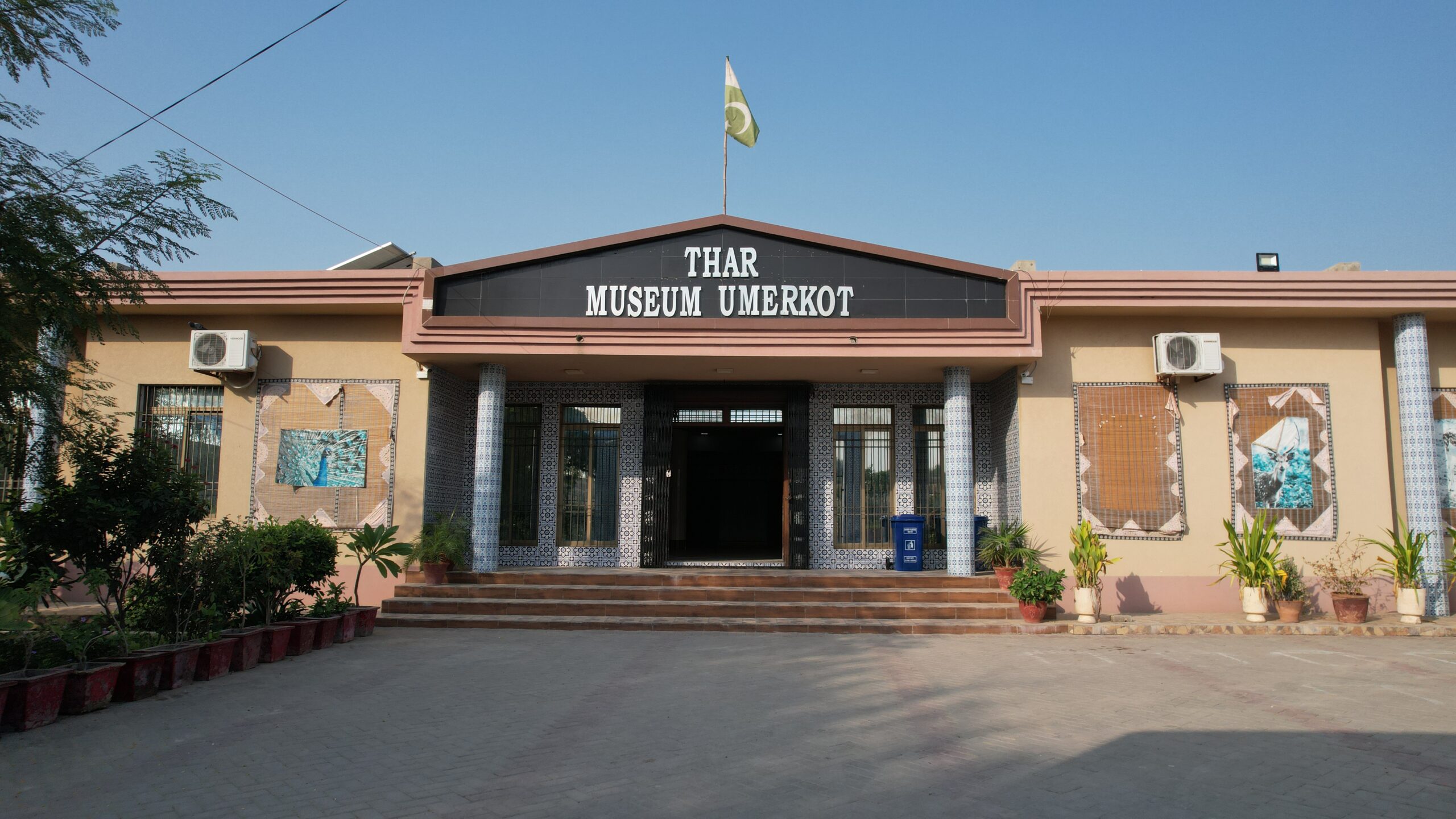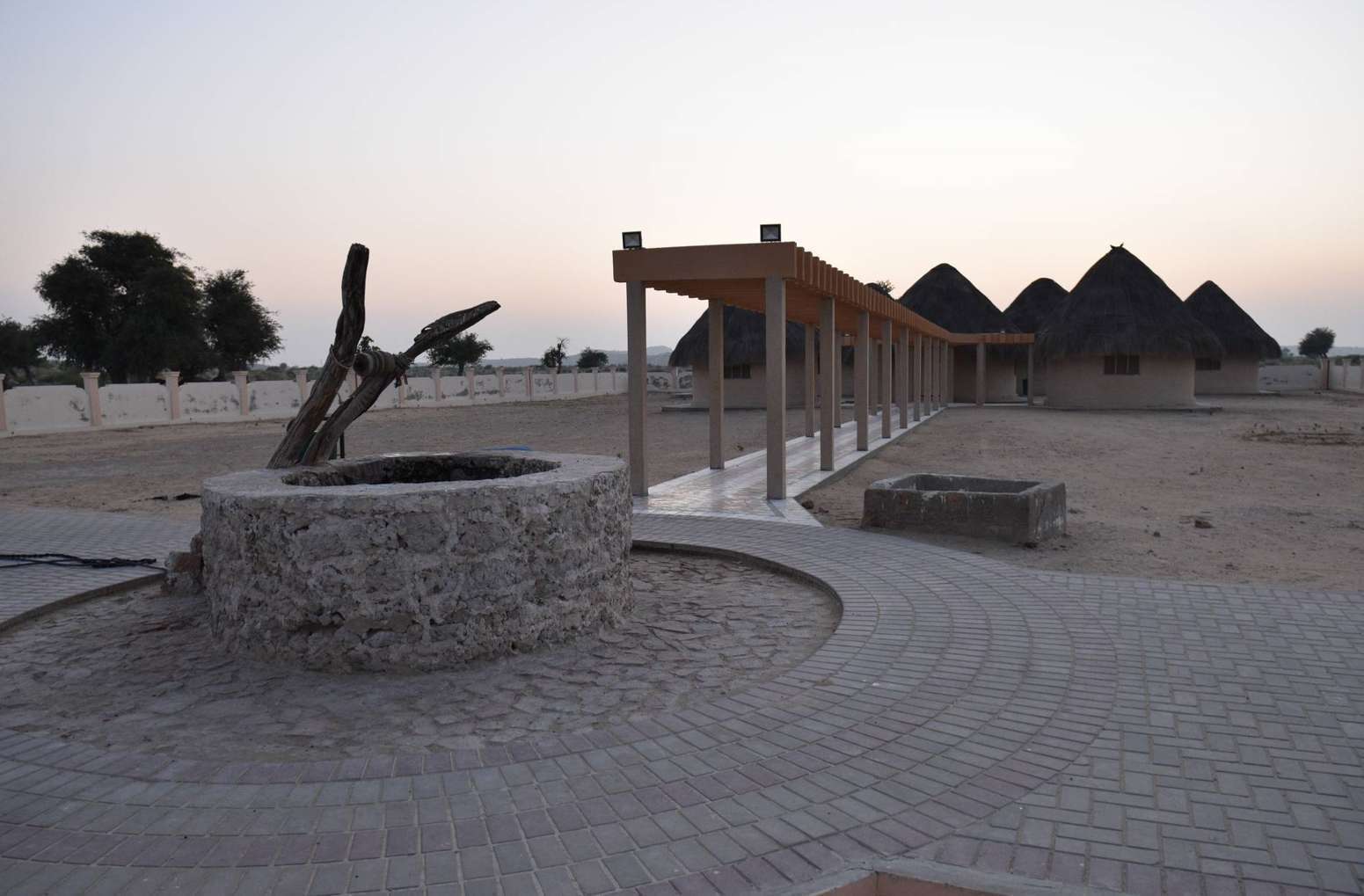Umerkot also known historically as Amarkot. While it may not appear on every traveler’s radar, this ancient city is a treasure trove of history, culture, and desert charm. From being the birthplace of one of the greatest Mughal emperors to serving as a sanctuary for spiritual seekers and folklore heroes, Umerkot is a destination that deserves far more attention than it receives.

A City Steeped in Mughal History
Umerkot’s most iconic claim to fame is its association with Emperor Akbar, the visionary Mughal ruler born here in 1542. His father, Humayun, fleeing from the forces of Sher Shah Suri, found refuge in the court of Rana Prasad, the Hindu Rajput ruler of Amarkot. It was within the walls of the Umerkot Fort that Akbar was born—a moment that would later shape the course of South Asian history. This fort still stands today, a silent witness to centuries of political upheaval, cultural fusion, and architectural evolution.
The city’s historical significance doesn’t end with the Mughals. Umerkot was once a stronghold of the Sodha Rajputs, a warrior clan that ruled parts of Sindh and Rajasthan. Their legacy is etched into the city’s architecture, traditions, and oral histories, making Umerkot a fascinating blend of Islamic, Hindu, and Rajput influences.
Where Folklore Comes Alive
Beyond its imperial past, Umerkot is the setting for one of Sindh’s most beloved folk tales—Umar Marvi. Marvi, a village girl from nearby Malir, was abducted by King Umar who fell in love with her beauty and spirit. Despite being offered luxury and power, Marvi refused to abandon her homeland and values. Her story, immortalized in Shah Abdul Latif Bhittai’s poetry, is a symbol of patriotism, resilience, and feminine strength. The Umar Marvi Well, where she was once imprisoned, remains a poignant site for visitors seeking to connect with Sindh’s rich literary heritage.
A Cultural Crossroads
Umerkot is one of the few cities in Pakistan where Hindus form a significant portion of the population, and their presence adds a vibrant layer to the city’s cultural fabric. The Shiv Mandir, one of the oldest and most revered Hindu temples in Sindh, draws pilgrims from across the region, especially during Maha Shivratri, when the city transforms into a spiritual hub of devotion and celebration.
The city’s linguistic diversity is equally impressive. Locals speak Sindhi, Dhatki (a Rajasthani dialect), Urdu, and Punjabi, creating a rich tapestry of communication and storytelling. This multilingual environment is reflected in the city’s bazaars, where traders and artisans offer everything from handwoven ajrak to colorful pottery, each item telling its own story.
Gateway to the Thar Desert
Geographically, Umerkot serves as a gateway to the Thar Desert, one of the most unique ecosystems in South Asia. Its proximity to desert towns like Mithi, Chachro, and Nagarparkar makes it an ideal starting point for desert safaris, cultural expeditions, and nature photography. The landscape here is a mesmerizing blend of fertile plains, sand dunes, and acacia forests, offering a rare glimpse into the coexistence of agriculture and arid terrain.
Despite its modest size—just under 50 square kilometers—Umerkot is home to over 140,000 residents, each contributing to the city’s dynamic rhythm. From bustling markets to serene temples, from historical forts to desert trails, Umerkot is a city that invites exploration, reflection, and awe.
Why Umerkot Deserves Your Attention
In a country brimming with iconic destinations like Lahore, Islamabad, and Hunza, Umerkot stands out as a hidden gem waiting to be discovered. It offers a unique combination of historical depth, cultural richness, and natural beauty that few places can match. Whether you’re a history enthusiast, a spiritual seeker, a photographer, or simply a curious traveler, Umerkot promises an experience that’s both authentic and unforgettable.
So if you’re planning your next adventure in Pakistan, consider stepping off the beaten path. Let Umerkot surprise you with its stories, captivate you with its charm, and leave you with memories that linger long after the journey ends.
How to Get to Umerkot – Travel Guide for Every Route
Umerkot may be tucked away in the southeastern desert belt of Sindh, but reaching this historical city is easier than most travelers expect. Whether you’re flying in from a major city, riding the rails, or cruising the highways, there are multiple ways to access this cultural gem. This section is designed to help you plan your journey with ease, while targeting key search terms like how to reach Umerkot, Umerkot travel routes, and transport to Umerkot.
By Air: Nearest Airports and Flight Options
Umerkot does not have its own airport, but it is accessible via several nearby air hubs:
- Jinnah International Airport (Karachi) – Located approximately 395 km from Umerkot, this is the most commonly used airport for travelers heading to Umerkot. Karachi is well-connected to domestic and international destinations, making it a convenient entry point.
- Hyderabad Airport (Limited Service) – Around 250 km away, Hyderabad offers limited domestic flights. It’s a viable option for travelers already within Sindh.
From the airport to Umerkot:
- Hire a private car or taxi for direct travel.
- Use intercity bus services from Karachi or Hyderabad to Mirpurkhas, then take a local van or taxi to Umerkot.
By Train: Rail Routes and Stations
While Umerkot itself lacks a major railway station, nearby Mirpurkhas serves as the primary rail gateway:
- Karachi → Mirpurkhas: Multiple daily trains operate between Karachi and Mirpurkhas, including the Sindh Express and Thar Express (when operational).
- Hyderabad → Mirpurkhas: A shorter route with frequent service.
Once in Mirpurkhas, Umerkot is just a 2-hour drive away. You can:
- Hire a taxi from the station.
- Use local vans or buses that run regularly between Mirpurkhas and Umerkot.
By Road: The Most Flexible Option
Traveling by road is the most popular and flexible way to reach Umerkot. The city is connected via a network of highways and regional roads that make it accessible from major cities in Sindh and beyond.
Popular Routes:
- Karachi → Hyderabad → Tando Allahyar → Mirpurkhas → Umerkot
- travel time: 7–8 hours
- Road condition: Mostly paved highways with some rural stretches
- Sukkur → Nawabshah → Mirpurkhas → Umerkot
- travel time: 6–7 hours
- Ideal for travelers coming from northern Sindh or Punjab
Transport Options:
- Intercity Buses: Operators like Daewoo, Faisal Movers, and Skyways offer services to Mirpurkhas, from where you can transfer to Umerkot.
- Local Vans: Available at Mirpurkhas bus terminals, these run frequently to Umerkot.
- Private Car Hire: Recommended for comfort and flexibility, especially if you plan to explore nearby desert towns.
Travel Tips for Visitors
- Navigation: Use Google Maps or offline apps like Maps.me for accurate directions.
- Fuel Stops: Fill up in Mirpurkhas or Tando Allahyar; fuel stations are sparse in rural areas.
- Local Advice: Ask locals for the best van timings or road shortcuts—they’re often more reliable than online schedules.
Top Tourist Attractions in Umerkot
1. Umerkot Fort – The Birthplace of Emperor Akbar
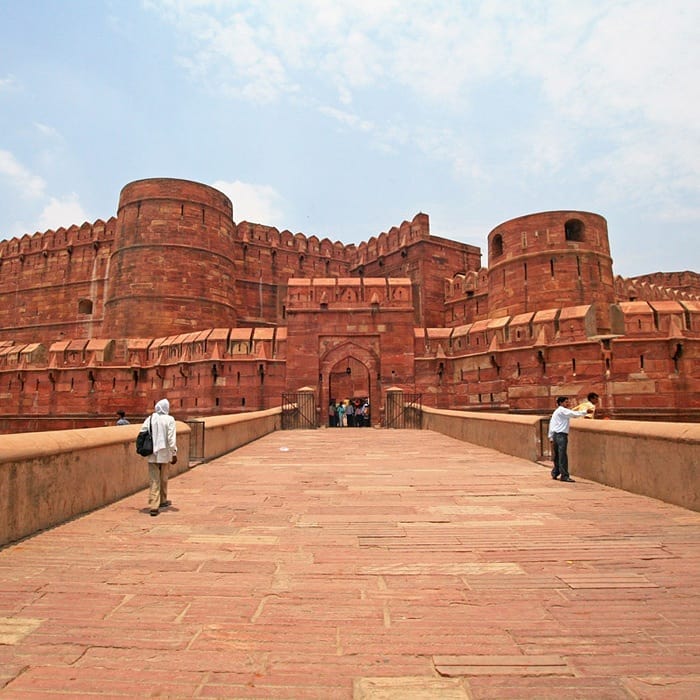
If there’s one place that defines Umerkot’s historical legacy, it’s the majestic Umerkot Fort. Built in the 11th century by Rana Amar Singh, this fort is not just a structure of stone and mortar—it’s a living monument to the birth of Emperor Akbar, one of the greatest rulers of the Mughal dynasty. The fort’s thick walls, arched gateways, and watchtowers evoke a sense of timeless grandeur, making it a must-visit for history enthusiasts and architecture lovers alike.
Located in the heart of the city, the fort is easily accessible and offers panoramic views of the surrounding desert landscape. Inside, you’ll find a museum housing artifacts, weapons, and manuscripts that narrate the story of Umerkot’s royal past. The birthplace of Akbar is marked with a commemorative plaque, and guided tours are available to walk you through the fort’s strategic importance during the Mughal era.
2. Shiv Mandir – A Sacred Beacon of Harmony
In the heart of Umerkot stands one of the oldest and most revered Hindu temples in Pakistan—the Shiv Mandir. This ancient temple, believed to be over 2,000 years old, is dedicated to Lord Shiva, and serves as a powerful symbol of interfaith harmony and spiritual resilience in Sindh. For pilgrims, historians, and curious travelers, the Shiv Mandir offers a rare glimpse into the religious diversity and cultural depth of Umerkot.
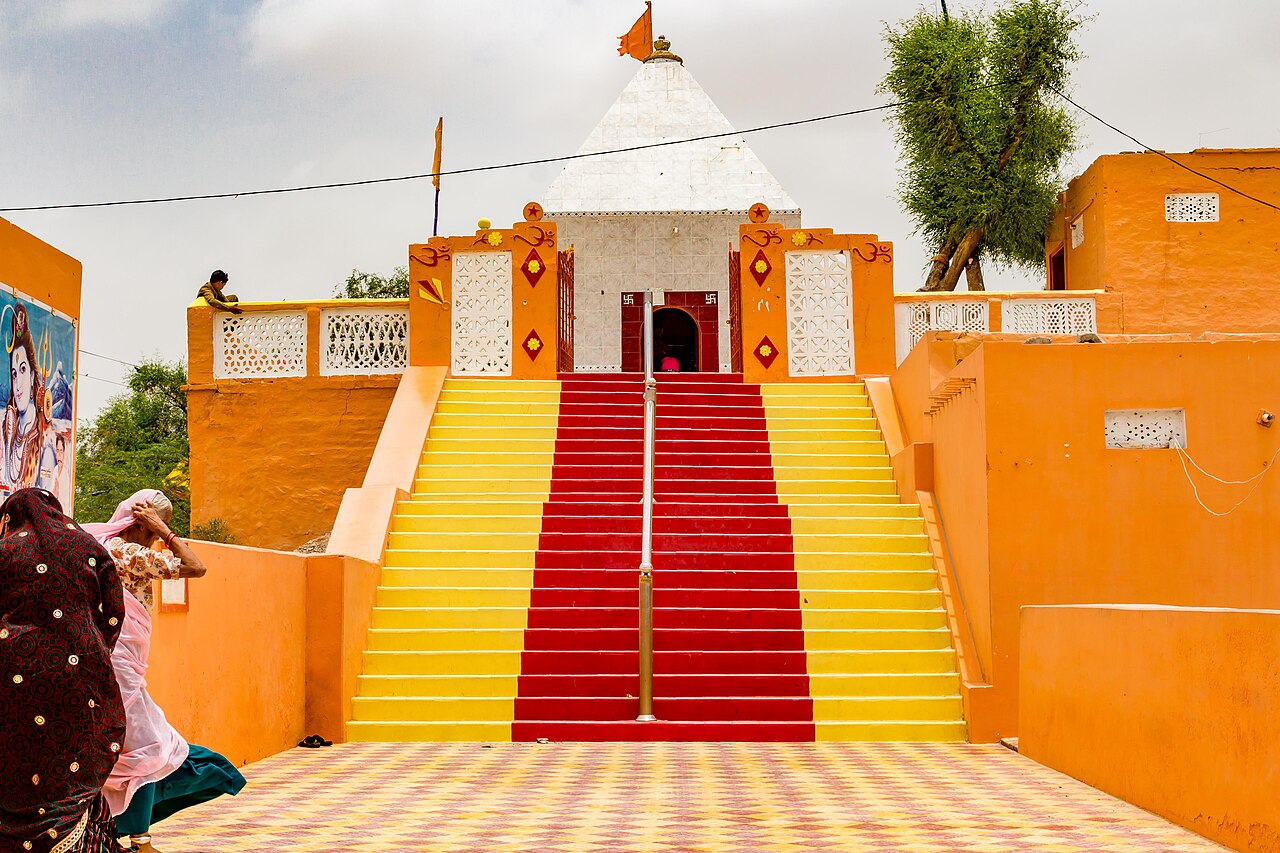
A Place of Pilgrimage and Peace
Every year, thousands of devotees gather here to celebrate Maha Shivratri, a festival that transforms the city into a vibrant spiritual hub. The temple’s architecture is modest yet dignified, with a central sanctum housing the Shiva Lingam, surrounded by prayer halls and courtyards. The air is often filled with the scent of incense and the sound of devotional chants, creating a serene atmosphere that welcomes visitors of all backgrounds.
What makes Shiv Mandir truly special is its role in fostering communal harmony. Despite being located in a Muslim-majority country, the temple is respected and protected by the local community. It’s not uncommon to see Muslims participating in temple festivities or helping maintain the site, reflecting Umerkot’s inclusive spirit.
Historical Significance
The temple’s origins are shrouded in legend. Some believe it was built during the Soomra dynasty, while others trace its roots back to pre-Islamic Sindh, when Hinduism flourished across the region. Over centuries, the temple has survived invasions, political shifts, and natural decay—yet it remains a steadfast symbol of faith and endurance.
Inside the temple, you’ll find carved stone idols, ancient inscriptions, and ritual artifacts that speak to its long-standing religious importance. The temple also houses a small library of religious texts and a community kitchen that serves free meals to pilgrims during festivals.
3. Archaeological Museum Umerkot – A Time Capsule of Sindh’s Past
If you’re a history buff or a curious traveler with a love for ancient artifacts, the Archaeological Museum Umerkot is an absolute must-visit. Located adjacent to the Umerkot Fort, this museum is a treasure trove of relics, manuscripts, and cultural artifacts that span centuries of Sindh’s rich and diverse history. It’s not just a museum—it’s a portal into the soul of the region.
What You’ll Discover Inside
The museum houses a remarkable collection of items from the Indus Valley Civilization, Mughal era, Soomra dynasty, and British colonial period. Visitors can explore:
- Terracotta figurines and pottery shards from ancient settlements
- Coins and seals dating back to pre-Islamic Sindh
- Weapons and armor used by Rajput warriors
- Manuscripts and calligraphy from the Mughal and Islamic periods
- Traditional Sindhi jewelry, textiles, and household items
Each exhibit is accompanied by detailed descriptions in English, Sindhi, and Urdu, making it accessible to a wide range of visitors. The museum’s layout is intuitive, guiding you through a chronological journey from ancient civilizations to modern-day Sindh.
Educational and Cultural Value
The museum is managed by the Directorate General of Antiquities, Government of Sindh, and plays a vital role in preserving and promoting the region’s heritage. It’s frequently visited by students, researchers, and tourists who want to understand the historical context of Umerkot and its surrounding areas.
Interactive displays and guided tours are available for groups, and the museum often hosts cultural exhibitions, folk music performances, and academic seminars that celebrate Sindh’s artistic legacy.
Visual Appeal
The museum’s architecture blends colonial and local styles, with arched entrances, high ceilings, and spacious galleries. The surrounding gardens and pathways offer a peaceful environment for reflection and photography. You can view images of the museum’s interior and exterior on Wikipedia, Travel Pakistani, or the Directorate of Antiquities site
4. Emperor Akbar’s Birthplace – Where an Empire Was Born

Few places in the subcontinent carry the historical weight of Emperor Akbar’s birthplace, located within the walls of Umerkot Fort. On October 15, 1542, the future Mughal emperor was born here while his father, Humayun, was in exile. This moment marked the beginning of a reign that would redefine governance, culture, and religious tolerance across South Asia.
A Refuge Turned Royal Cradle
The story begins with Humayun fleeing the forces of Sher Shah Suri. Seeking sanctuary, he arrived in Amarkot (now Umerkot), where Rana Prasad, the Hindu Rajput ruler of the region, offered him refuge. It was in this act of generosity that history was made—Humayun’s wife, Hamida Banu Begum, gave birth to Akbar within the fort’s walls. This interfaith alliance between a Muslim emperor and a Hindu king is often cited as a precursor to Akbar’s later policies of religious pluralism.
Today, the exact site of Akbar’s birth is marked by a stone monument and commemorative plaque inside the fort. Visitors can stand where one of the greatest emperors of the Mughal dynasty first opened his eyes to the world—a surreal experience for history lovers.
What You’ll See
The monument is modest but powerful. It features:
- A marble plaque inscribed with Akbar’s birth details
- A small garden surrounding the site
- Historic murals and photographs depicting Akbar’s life and reign
- Nearby museum exhibits with Mughal-era artifacts
The site is well-maintained and often visited by students, historians, and tourists who want to connect with the roots of South Asia’s imperial legacy.
5. Moomal Ji Mari – The Palace of Love and Loyalty
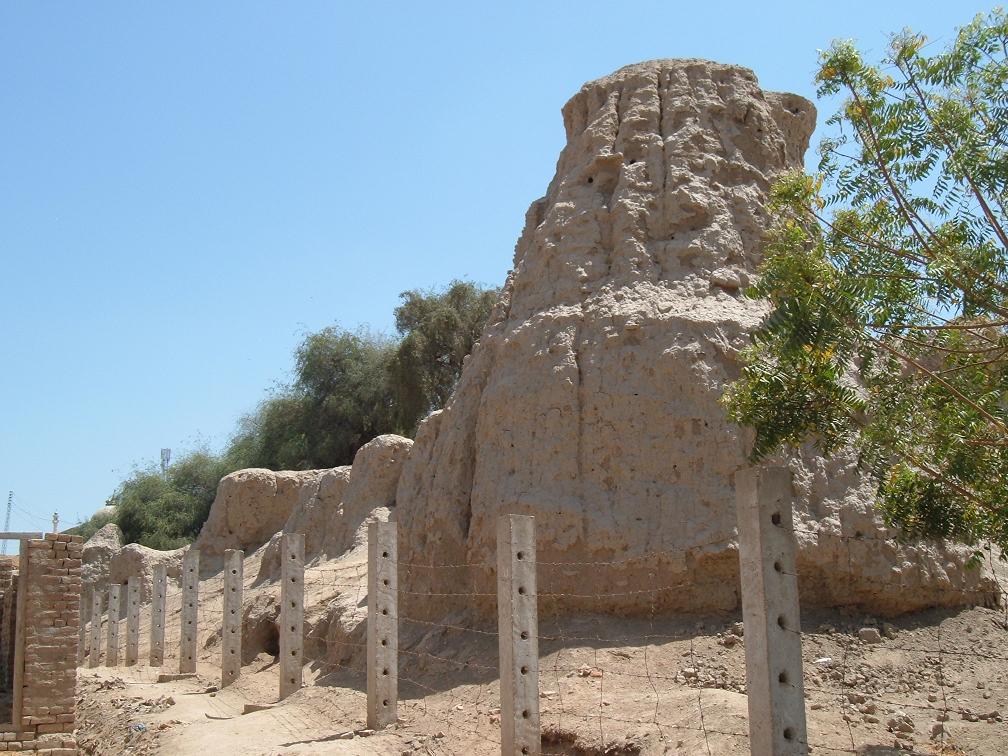
If Umerkot is a city of legends, then Moomal Ji Mari is its most poetic landmark. This ancient site, nestled on the outskirts of the city, is believed to be the ruins of the palace of Princess Moomal, the heroine of one of Sindh’s most cherished romantic folktales—Moomal and Rano. The tale, immortalized in the verses of Shah Abdul Latif Bhittai, speaks of love, betrayal, and unwavering devotion, and the site itself is a hauntingly beautiful reminder of that legacy.
The Legend Behind the Ruins
Moomal was a princess of extraordinary beauty and intellect, living in a palace filled with magical illusions and puzzles designed to test suitors. Rano, a brave Rajput from Lodhro, passed every trial and won her heart. But fate intervened—through a tragic misunderstanding, Rano believed Moomal had been unfaithful and left her. Moomal, devastated, waited for years until she finally reunited with him, only to die in his arms from grief. Their story is a symbol of eternal love and sacrifice, deeply embedded in Sindhi culture.
The ruins of Moomal Ji Mari are said to be the remnants of her palace. Though time has eroded its grandeur, the site still evokes a sense of mystery and romance. Visitors often report feeling a quiet, melancholic energy as they walk among the crumbling walls and scattered stones.
Archaeological Significance
Beyond folklore, Moomal Ji Mari is also an important archaeological site, with layers of history dating back over 1,500 years. Excavations have revealed:
- Fortified walls and watchtowers
- Underground chambers believed to be part of the palace’s labyrinth
- Pottery shards, coins, and tools from ancient civilizations
- Artifacts now housed in the Umerkot Museum
The site is protected by the Directorate General of Antiquities, Government of Sindh, and has been the subject of multiple research studies and documentaries2.
Visual Glimpse
You can explore images and maps of Moomal Ji Mari through Wikipedia’s entry and the Directorate of Antiquities’ official page. These visuals offer a closer look at the site’s haunting beauty and historical depth.
6. Rana Jaageer Goth – The Rajput Legacy Lives On
Just outside the bustling center of Umerkot lies Rana Jaageer Goth, a village that’s more than just a cluster of homes—it’s the ancestral seat of the Sodha Rajputs, the Hindu warrior clan that once ruled Amarkot. This serene settlement is steeped in tradition, history, and a sense of quiet dignity that reflects centuries of leadership and resilience.
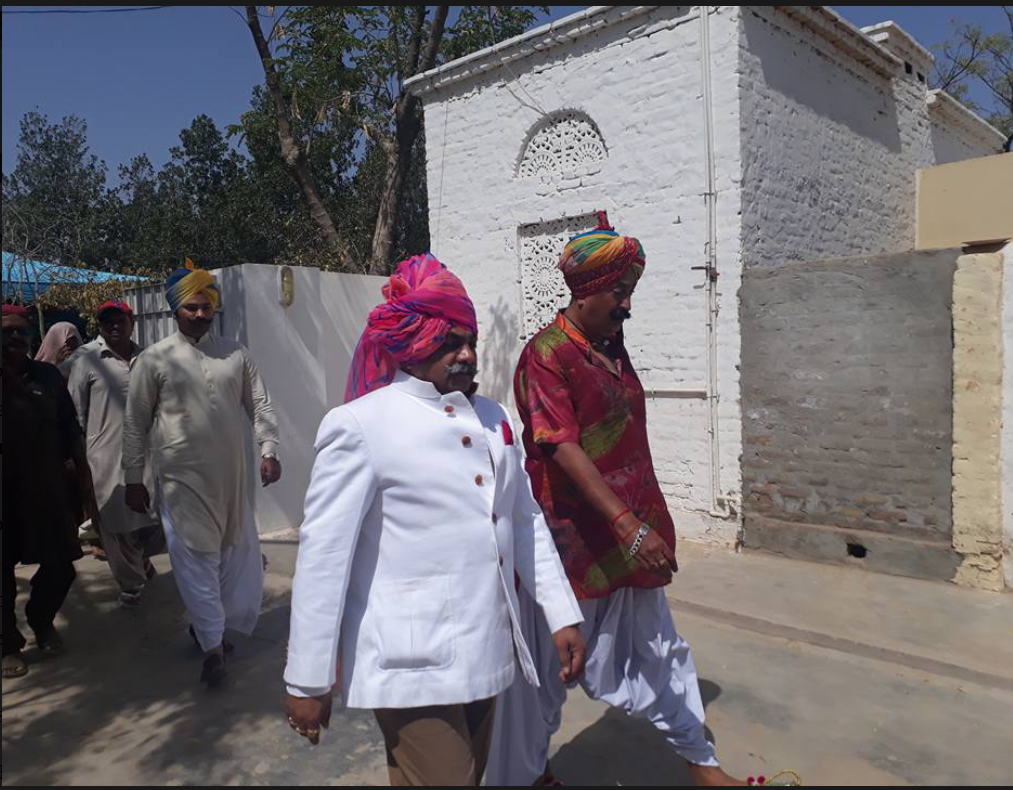
Home of the Sodha Dynasty
Rana Jaageer Goth is famously associated with Rana Chander Singh, a prominent political figure and the last ruling jagirdar of Amarkot. He was a founding member of the Pakistan Peoples Party (PPP) and a symbol of Hindu representation in Pakistani politics. His descendants, including Rana Hamir Singh, continue to reside in the village and play active roles in community leadership and cultural preservation.
The ancestral haveli of the Rana family still stands, a modest yet elegant structure that showcases traditional Rajput architecture—arched doorways, carved wooden balconies, and courtyards shaded by neem trees. Visitors are often welcomed with warmth and hospitality, especially during festivals and cultural events.
A Glimpse into Rural Sindh
Beyond its royal lineage, Rana Jaageer Goth offers a window into rural Sindhi life. The village is surrounded by agricultural fields, primarily growing wheat, cotton, and millet. You’ll see camel carts, mud houses, and women in vibrant ajrak shawls going about their daily routines. It’s a peaceful contrast to the urban energy of Umerkot and a great place to experience authentic village culture.
Local artisans in the village produce handwoven textiles, pottery, and folk instruments, many of which are sold in Umerkot’s bazaars. If you’re lucky, you might catch a Thari folk music performance or a community gathering under the stars.
Spiritual and Cultural Significance
The village is also home to several small temples, shrines, and community centers that reflect the spiritual diversity of the region. During Diwali, Holi, and Maha Shivratri, Rana Jaageer Goth comes alive with lights, music, and rituals that draw visitors from across Sindh.
The Rana family often hosts guests, journalists, and researchers, sharing stories of their heritage and the evolving role of Hindu Rajputs in modern Pakistan. It’s a rare opportunity to engage with living history and understand the nuances of identity, politics, and tradition in this part of the world.
7. Sant Nenuram Ashram – A Temple of Humanity
Located in Islamkot, just a short drive from Umerkot, the Sant Nenuram Ashram is one of the most revered spiritual centers in Sindh. More than just a religious site, this ashram is a beacon of interfaith harmony, selfless service, and community care. Founded by Sant Nenuram, a Hindu saint born in 1898, the ashram continues to uphold his teachings of love, equality, and devotion to humanity.
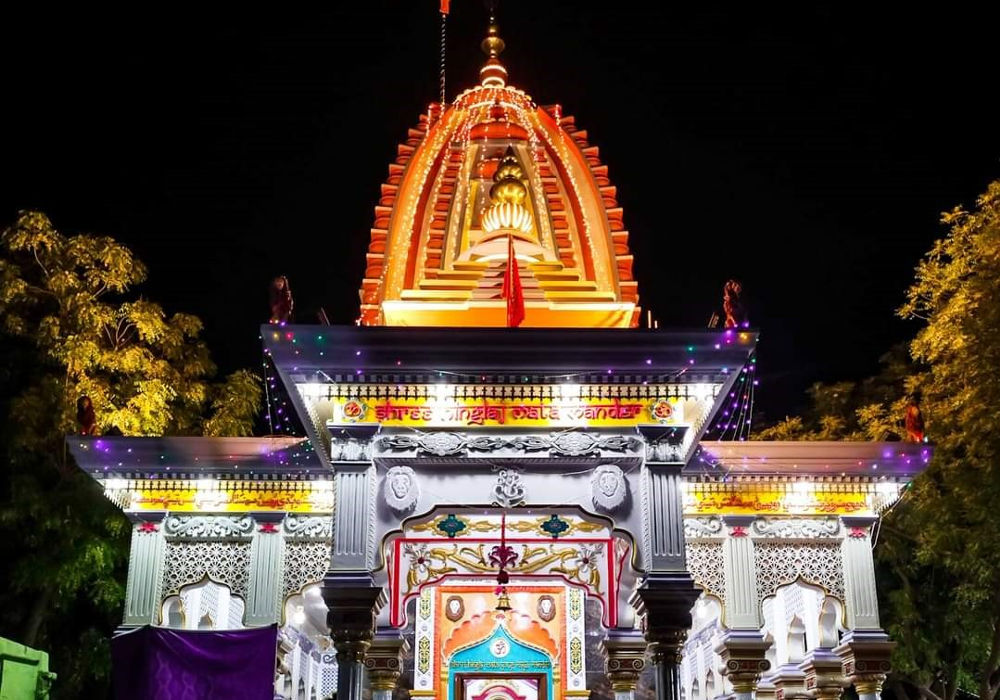
A Legacy of Compassion
Sant Nenuram was inspired by the teachings of Sant Poorun Bharti and spent years in spiritual practice before establishing the ashram in Islamkot. His philosophy was simple yet profound: serve all beings without discrimination. He built a community kitchen (langar) that still operates today, feeding thousands of people daily—regardless of religion, caste, or background.
The ashram’s ethos is rooted in seva (selfless service). Volunteers from across Sindh and even neighboring regions come here to cook, clean, and serve food. During festivals and special occasions, the number of visitors swells, and the ashram becomes a vibrant hub of spiritual celebration.
Architectural and Cultural Features
The ashram complex includes:
- A main temple dedicated to Sant Nenuram
- Shrines of Hanuman and other Hindu deities
- A meditation hall and community kitchen
- Dormitories for pilgrims and volunteers
- A library with spiritual texts and historical records
The architecture is modest but serene, with whitewashed walls, open courtyards, and shaded walkways. The atmosphere is tranquil, making it an ideal place for meditation, reflection, or simply experiencing the warmth of communal life.
A Symbol of Interfaith Harmony
What sets Sant Nenuram Ashram apart is its role in promoting religious coexistence. Muslims, Christians, and people of other faiths regularly visit the ashram, participate in its activities, and contribute to its upkeep. It’s not uncommon to see Muslim volunteers serving food or attending spiritual talks—an embodiment of Sindh’s inclusive spirit.
The ashram has also been featured in numerous documentaries and articles for its role in peacebuilding and social welfare, including coverage by Dawn and Minute Mirror.
Visual Glimpse
Images of the Sant Nenuram Ashram complex—including its temple, kitchen, and community spaces—will appear in the card below. You can also explore more through Wikipedia’s entry and Getty Images’ photo gallery.
Visitor Tips
- Location: Islamkot, approx. 45 km from Umerkot
- Best Time to Visit: During Sant Nenuram’s annual festival (usually in September)
- Entry: Free; donations welcome
- Etiquette: Dress modestly, respect communal spaces, and ask before taking photos
- Stay Options: Basic dorms available for pilgrims; nearby guesthouses in Islamkot
8. Umar Marvi Monument – Sindh’s Tale of Unbreakable Spirit
In the heart of Umerkot stands a monument that transcends stone and history—it’s the Umar Marvi Monument, a tribute to one of Sindh’s most beloved folk heroines. The story of Marvi, a village girl from Malir, and Umar, the ruler of Umerkot, is a tale of unwavering patriotism and moral strength. It’s not just a love story—it’s a cultural cornerstone that defines Sindhi identity.
The Legend of Marvi
Marvi was known for her beauty, wisdom, and deep love for her homeland. When Umar, captivated by her charm, abducted her and brought her to his palace, he offered her luxury, status, and marriage. But Marvi refused. She longed for her simple village life and remained steadfast in her loyalty to her people and values. After years of captivity, Umar, moved by her resolve, released her. This tale, immortalized by Shah Abdul Latif Bhittai, is celebrated across Sindh as a symbol of resistance, purity, and national pride.
The Monument Today
The Umar Marvi Monument is located within the Umerkot Fort, near the well where Marvi was said to have been imprisoned. The site includes:
- A stone structure with inscriptions narrating the folk tale
- The Marvi Well, preserved and marked for visitors
- A sculpture garden depicting scenes from the story
- Plaques in Sindhi, Urdu, and English for educational context
The monument is simple yet powerful. It’s surrounded by desert flora and offers a quiet space for reflection. Visitors often leave flowers or candles as a tribute to Marvi’s courage.
Visual Glimpse
Images of the Umar Marvi Monument and the surrounding fort area will appear in the card below. You can also explore more through Arab News’ feature on Umerkot, Prestine Travels’ story of Umer Marvi, and Reth aur Reghistan’s travel blog, which beautifully captures the emotional gravity of the site.
Visitor Tips
- Location: Inside Umerkot Fort; clearly signposted
- Best Time to Visit: Late afternoon for golden desert light
- Entry Fee: Included with fort admission
- Guides: Available at the fort; storytelling adds depth to the experience
- Accessibility: Easy walk from the fort entrance
9. Local Bazaars of Umerkot – A Sensory Feast of Color and Craft
No visit to Umerkot is complete without wandering through its local bazaars, where the pulse of the city beats loudest. These markets are more than just places to shop—they’re living museums of Sindhi culture, showcasing everything from handcrafted textiles to aromatic spices, traditional jewelry, and street food that will make your taste buds dance.
Ajrak, Bangles & Handicrafts
Umerkot’s bazaars are renowned for their Sindhi Ajrak—a centuries-old block-printed textile that symbolizes regional pride. You’ll find stalls overflowing with ajrak shawls, dupattas, and kurtas in deep indigo and crimson hues. Local artisans also sell handmade bangles, embroidered caps, and mirror-work bags, each piece reflecting the desert’s vibrant aesthetic.
Many of these crafts are produced in nearby villages and brought into Umerkot for sale, supporting rural livelihoods and preserving traditional skills. The bazaar is a great place to meet these artisans, hear their stories, and even watch live demonstrations of block printing or embroidery.
Street Food & Spices
Hungry? Umerkot’s street food scene is a delicious blend of Sindhi, Rajasthani, and local Thari flavors. Vendors serve up piping hot daal pakwan, samosas, jalebi, and spicy chaat from carts that line the market alleys. The scent of cardamom, cumin, and dried chilies wafts through the air, drawing you toward spice shops that sell locally sourced ingredients in bulk.
For a deeper dive into the food culture, check out this street food tour that explores Umerkot’s Hindu community and their culinary traditions.
Popular Bazaars to Visit
- Shahi Bazaar – The oldest and most iconic market in Umerkot, known for ajrak, pottery, and jewelry
- Rohal Bus Stand Market – A lively spot for fresh produce, fruit stalls, and Hindu-owned shops
- College Road Market – Great for clothing, electronics, and household goods
- Zero Point Market – A mix of food stalls, textile vendors, and mobile accessories
Each market has its own rhythm and specialty, so it’s worth exploring more than one. Whether you’re bargaining for bangles or sipping chai with a local shopkeeper, the bazaars offer an immersive experience into Umerkot’s daily life.
Visual Glimpse
Here are some images from the bazaars of Umerkot to give you a taste of the atmosphere:
Image sources:
- Shahi Bazaar, Umerkot – Wikimedia Commons
- Handicraft enterprise in Sindh – Community World Service Asia
- Street food tour of Umerkot – YouTube
These visuals showcase the colors, textures, and energy that define Umerkot’s markets.
Visitor Tips
- Best Time to Visit: Morning for fresh produce; evening for street food and shopping
- Bargaining: Expected and encouraged—just be respectful
- Cash: Most vendors prefer cash; ATMs are available nearby
- Etiquette: Ask before photographing people or stalls
10. Gateway to the Thar Desert – Where Sand Meets Soul
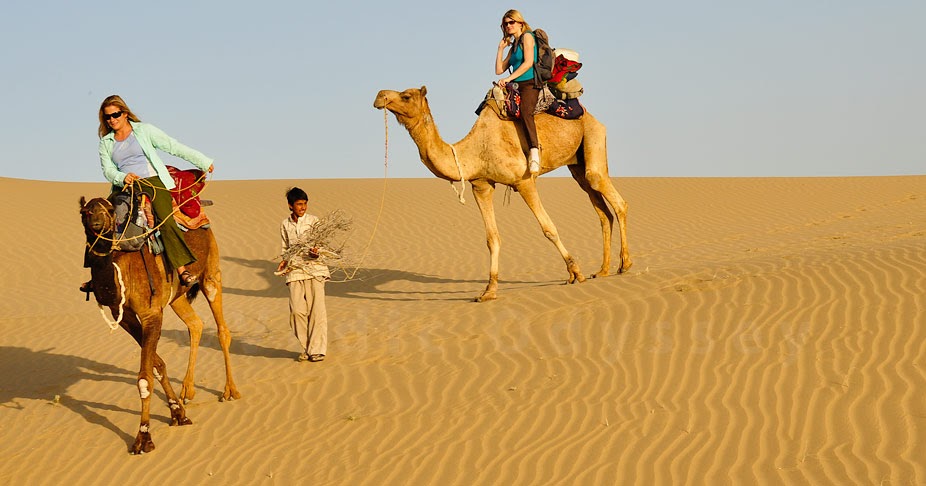
Umerkot isn’t just a city—it’s the threshold to the Thar Desert, one of the most expansive and culturally rich deserts in the world. Stretching across southeastern Pakistan and into India, the Thar Desert is a realm of golden dunes, resilient communities, and timeless traditions. For travelers seeking raw beauty, spiritual depth, and off-the-grid adventure, Umerkot is the perfect launchpad.
A Landscape of Contrasts
The desert around Umerkot is not barren—it’s alive. You’ll find:
- Rolling sand dunes that shift with the wind
- Camel caravans crossing ancient trade routes
- Mud huts (chonros) with intricate mirror work
- Acacia trees dotting the horizon like sentinels of survival
The terrain transitions from semi-arid plains to full desert as you move toward Mithi, Chachro, and Nagarparkar, each offering its own flavor of Thari culture. Whether you’re hiking through dunes or sipping tea in a village courtyard, the desert invites you to slow down and connect.
Desert Culture and Communities
The Thar region is home to Thari people, known for their hospitality, music, and resilience. You’ll hear folk songs echoing across the dunes, see women in vibrant lehengas fetching water from wells, and encounter temples and mosques standing side by side—a testament to centuries of coexistence.
Local festivals like Thar Mela and Karoonjhar Mahotsav celebrate desert life with music, dance, and crafts. You can also visit salt mines, grazing lands, and traditional weaving centers to witness how communities thrive in this harsh yet beautiful environment.
Climate and Weather of Umerkot
Umerkot’s climate is shaped by its proximity to the Thar Desert, giving it a hot semi-arid to arid climate that varies dramatically across seasons. The weather here plays a crucial role in shaping local life—from agricultural cycles to festival timings—and it’s a key consideration for any traveler planning a visit.
Summer: Scorching and Dry (April to August)
Summer in Umerkot is intense. Temperatures regularly soar above 45°C (113°F), especially in May and June, making outdoor activities challenging during midday hours. The heat is dry, with low humidity, and the sun is relentless. Locals adapt by staying indoors during peak hours and relying on traditional cooling methods like mud houses and shaded courtyards.
Despite the harshness, summer is also the time when monsoon winds begin to stir. July and August may bring occasional rainfall, though it’s sporadic and unpredictable. These showers, while brief, offer temporary relief and help sustain desert vegetation.
Autumn: Transition and Calm (September to October)
Autumn brings a welcome drop in temperature. Days hover around 30–35°C (86–95°F), while nights become cooler. This is a transitional period when the desert begins to shed its summer intensity. The skies are mostly clear, and the air feels lighter. It’s a great time for photography, desert drives, and cultural exploration.
This season also coincides with Sant Nenuram’s annual festival, drawing pilgrims and tourists to Islamkot and Umerkot. The weather is ideal for attending outdoor events and exploring historical sites.
Winter: Mild and Pleasant (November to February)
Winter is the most comfortable season in Umerkot. Daytime temperatures range from 20–28°C (68–82°F), while nights can dip to 10–14°C (50–57°F). The air is crisp, and the skies are clear—perfect for sightseeing, desert safaris, and temple visits.
This is also the peak tourist season. Local bazaars are lively, festivals are frequent, and the desert is at its most photogenic. Travelers can enjoy long walks, camel rides, and cultural performances without battling the heat.
Spring: Bloom and Breeze (March)
Spring is short but sweet in Umerkot. Temperatures begin to rise, but remain manageable—around 30–35°C (86–95°F). The desert blooms briefly with wildflowers and greenery, especially after a rainy winter. It’s a great time for nature photography and exploring rural villages.
Rainfall and Humidity
Umerkot receives low annual rainfall, averaging 100–150 mm. Most of it occurs between July and September, during the monsoon season. Humidity levels remain low year-round, except during brief rainy spells. The dry air is ideal for preserving historical structures and artifacts, which is why sites like Umerkot Fort and Moomal Ji Mari remain well-preserved.
Wind and Dust
Being a desert gateway, Umerkot occasionally experiences dust storms, especially in late spring and early summer. These are short-lived but can reduce visibility and affect travel plans. It’s advisable to check local forecasts and avoid long drives during storm alerts.
Best Time to Visit Umerkot
Ideal Travel Window: November to February
The best time to visit Umerkot is during the winter months, from November through February. During this period:
- Daytime temperatures range from 20°C to 28°C (68°F to 82°F)
- Nights are cool and comfortable, around 10°C to 14°C (50°F to 57°F)
- Skies are clear, humidity is low, and the desert breeze is refreshing
This season is perfect for:
- Exploring outdoor attractions like Umerkot Fort, Moomal Ji Mari, and local bazaars
- Embarking on desert safaris and camel rides
- Attending cultural festivals and religious events
Winter also coincides with the peak tourism season, so you’ll find more activity in markets, better availability of guides, and a livelier atmosphere overall.
Festival Highlights
If you want to experience Umerkot at its most vibrant, plan your visit around these key events:
- Sant Nenuram Festival (September) – Held in Islamkot, this spiritual gathering draws thousands of pilgrims and features music, food, and communal service
- Maha Shivratri (February/March) – Celebrated at the Shiv Mandir, this Hindu festival transforms the city into a spiritual and cultural hub
- Thar Mela (varies) – A desert festival featuring Thari music, dance, and crafts, often held in nearby towns like Mithi or Nagarparkar
These events offer a deeper connection to the region’s interfaith harmony, folk traditions, and community spirit.
Months to Avoid: May to August
While Umerkot is accessible year-round, the summer months—especially May through August—are best avoided unless absolutely necessary. During this time:
- Temperatures can exceed 45°C (113°F)
- Dust storms and heatwaves are common
- Outdoor activities become uncomfortable and even risky
If you must travel during summer, plan indoor visits to museums and temples, and schedule excursions early in the morning or after sunset.
Shoulder Seasons: March, October
March and October serve as transitional months:
- Weather is warm but manageable (around 30°C to 35°C)
- Tourist crowds are thinner
- Desert landscapes may bloom briefly after winter rains
These months are ideal for photographers, solo travelers, and those seeking a quieter experience.
Quick Travel Planner
| Month | Weather | Crowd Level | Recommended Activities |
| November | Cool & dry | Moderate | Fort tours, bazaars, desert drives |
| December | Mild winter | High | Cultural events, temple visits |
| January | Crisp & clear | High | Camel safaris, photography |
| February | Pleasant | High | Maha Shivratri, local festivals |
| March | Warming up | Low | Village tours, spring blooms |
| April | Hot & dry | Low | Limited sightseeing |
| May–August | Extremely hot | Very low | Indoor visits only |
| September | Rainy & humid | Moderate | Sant Nenuram Festival |
| October | Cooling down | Low | Desert exploration, cultural immersion |
Local Food and Best Restaurants in Umerkot
Umerkot’s culinary scene is a flavorful fusion of Sindhi, Thari, and Rajasthani influences. Whether you’re craving spicy street snacks, hearty vegetarian thalis, or smoky desert-style BBQ, the city offers a rich palette of tastes that reflect its cultural diversity.
Signature Dishes to Try
Here are some must-try local specialties:
- Sindhi Biryani – Fragrant rice layered with spiced meat and potatoes
- Daal Pakwan – Crispy flatbread served with spicy lentils and chutney
- Thari-style Roasted Mutton – Slow-cooked over open flames with desert spices
- Kachri Curry – A tangy dish made from wild cucumbers found in the Thar
- Malpura – Sweet pancakes soaked in syrup, often served during festivals
- Ladoo & Mithai – Traditional sweets made from gram flour, ghee, and sugar
- Camel Milk Tea – A local delicacy with a creamy, earthy flavor
Top Restaurants in Umerkot
| Restaurant Name | Specialty Dish | Location |
| Dua Restaurant | BBQ & Biryani | Near College Road |
| Megh Malhar Restaurant | Thari Mutton & Fish | Allahwala Chowk |
| Zaika Fast Foods | Burgers & Fries | Near National Bank |
| Sip Up The Soda | Chicken Pasta & Pizza | Infront of Allahwala Chowk |
| Desi Hut MJM | Sindhi Thali | Main Bazaar |
| Hotel SP Royals | Vegetarian Meals | Zero Point |
| Aroma Restaurant | BBQ & Curries | Near Umerkot Fort |
| Red Cheelyz | Fast Food & Wraps | Chachro Road |
| Tea Darbar | Chai & Snacks | City Center |
| Anil Tea Shop | Pakoras & Tea | Market Area |
| Atithi Dhaba | Rajasthani Thali | Near Railway Station |
| World Pizza Hut | Pizza & Pasta | Near Umerkot Bus Stand |
| Ghosia Dhaba | Local Sindhi Dishes | Rohal Bus Stop |
| Marvi Café | Sweets & Snacks | Near Marvi Well |
| Hotel Raja | Indian Veg Meals | College Road |
| Thar Taste Point | Camel Milk Tea | Desert Outskirts |
| Bhagat Bhojanalay | Pure Veg Thali | Hindu Colony |
| Royal Kitchen | Chicken Karahi | Near Fort Entrance |
| Ajrak Café | Sindhi Snacks | Ajrak Market |
| Desert Delight | Kachri Curry | Chachro Road |
| … | … | … |
Accommodation and Hotels in Umerkot
Whether you’re a solo traveler seeking a quiet retreat, a history buff wanting to stay near the fort, or a family looking for comfort and convenience, Umerkot offers a variety of lodging options. From budget-friendly guesthouses to locally run inns, the city’s accommodations reflect its warm hospitality and cultural charm.
Types of Accommodation
- Guest Houses – Ideal for budget travelers and backpackers. These offer basic amenities, home-cooked meals, and a local vibe.
- Mid-Range Hotels – Comfortable rooms, air conditioning, and proximity to major attractions.
- Heritage Stays – Some properties near Rana Jaageer Goth and Umerkot Fort offer traditional architecture and cultural ambiance.
- Pilgrim Lodges – Especially near Shiv Mandir and Sant Nenuram Ashram, these cater to spiritual travelers.
Top Hotels and Guest Houses in Umerkot
Here’s a curated table of accommodations in and around Umerkot:
| Hotel Name | Type | Location | Notable Feature |
| VIP Guest House | Guest House | Near Umerkot Fort | Rooftop views of the fort |
| Marvi Guest House | Heritage Stay | Near Moomal Ji Mari | Traditional decor |
| Ghosia Guest House | Budget Hotel | Rohal Bus Stop | Popular with solo travelers |
| Mustafa Guest House | Guest House | College Road | Family-friendly |
| Megh Malhar Hotel | Mid-Range Hotel | Allahwala Chowk | Attached restaurant |
| Syed Hotel & Guest House | Guest House | Near Shiv Mandir | Vegetarian meals available |
| Karoonjhar Guesthouse | Local Hotel | Chachro Road | Desert excursions available |
| Hotel SP Royals | Budget Hotel | Zero Point | Centrally located |
| Desert View Inn | Guest House | Outskirts of Umerkot | Quiet and scenic |
| Ajrak Residency | Mid-Range Hotel | Ajrak Market | Cultural theme rooms |
FAQs About Visiting Umerkot
Q1: Is Umerkot safe for tourists? Yes, Umerkot is generally safe for both domestic and international travelers. The local community is welcoming, and incidents are rare. As with any destination, it’s wise to stay aware of your surroundings, especially in remote desert areas.
Q2: What languages are spoken in Umerkot? The main languages include Sindhi, Dhatki (a Rajasthani dialect), Urdu, and Punjabi. English is understood in hotels and by some guides, but not widely spoken in rural areas.
Q3: Can foreigners visit religious sites like Shiv Mandir or Sant Nenuram Ashram? Absolutely. These sites are open to respectful visitors of all backgrounds. Modest dress and quiet behavior are appreciated.
Q4: Are there ATMs and mobile networks available? Yes. Umerkot has branches of major banks and functioning ATMs. Mobile coverage is reliable with providers like Jazz, Telenor, and Zong.
Q5: What should I wear while visiting Umerkot? Modest, breathable clothing is recommended. In summer, light cotton is ideal. For temple visits, avoid shorts or sleeveless tops. A scarf or shawl can be useful for sun protection and cultural sensitivity.
Q6: Is vegetarian food easily available? Yes. Due to the large Hindu population, vegetarian meals are widely available. Many restaurants offer pure veg thalis, dal dishes, and local sweets.
Q7: Are there luxury hotels in Umerkot? Umerkot primarily offers budget and mid-range accommodations. For luxury stays, travelers often base themselves in Hyderabad or Karachi and make day trips.
Q8: What’s the best way to get to Umerkot from Karachi? The most convenient route is by road: Karachi → Hyderabad → Mirpurkhas → Umerkot. You can hire a private car or take intercity buses to Mirpurkhas, then transfer to a local van or taxi.
Q9: Is there public transport within Umerkot? Yes. Rickshaws, motorbikes, and shared vans are common. For desert excursions, hiring a local guide with a 4×4 vehicle is recommended.
Q10: Can I visit the Thar Desert from Umerkot? Definitely. Umerkot is a gateway to the Thar. You can plan day trips or overnight stays in Mithi, Chachro, or Nagarparkar. Local tour operators offer desert safaris and cultural experiences.
Q11: What’s the best time to visit Umerkot? November to February is ideal, with mild weather and clear skies. Avoid May–August due to extreme heat.
Q12: Are there any major festivals I should plan around? Yes. Sant Nenuram’s Festival (September) and Maha Shivratri (Feb/March) are culturally rich events worth attending.
Q13: Is photography allowed at historical and religious sites? Generally, yes—especially in outdoor areas. However, always ask permission before photographing people or inside temples and shrines.
Q14: How should I interact with locals? With respect and curiosity. Umerkot’s residents are known for their hospitality. A few words in Sindhi or Urdu go a long way in building rapport.

